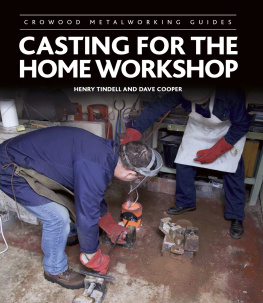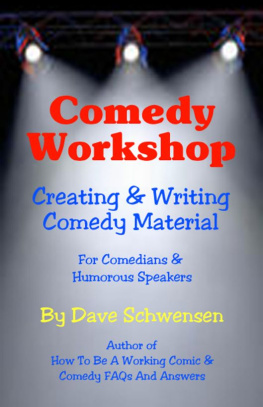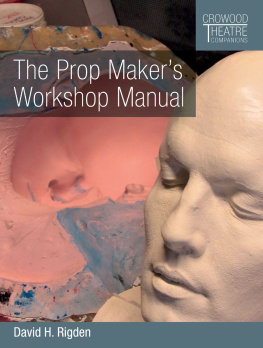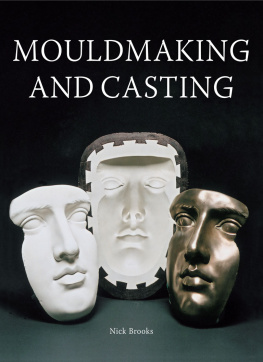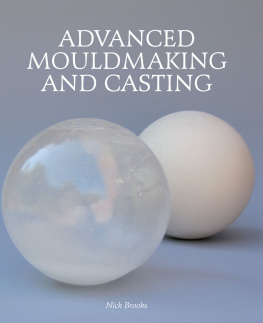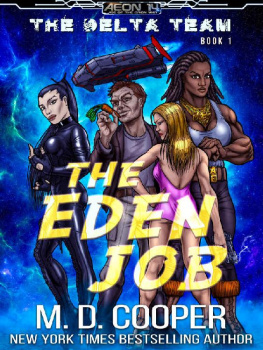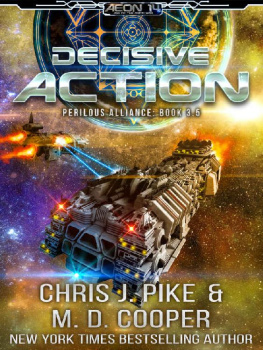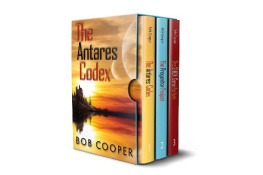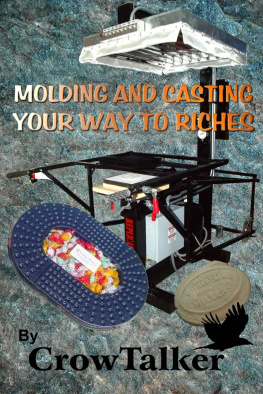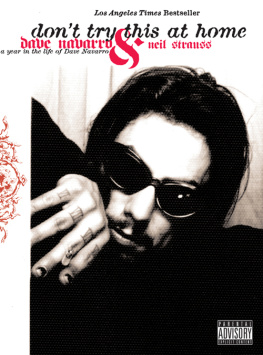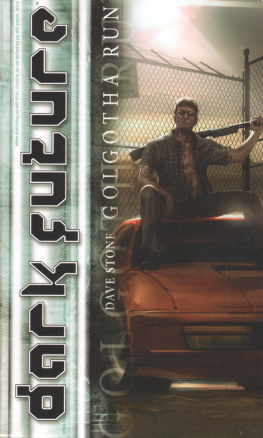Cooper Dave - Casting for the Home Workshop
Here you can read online Cooper Dave - Casting for the Home Workshop full text of the book (entire story) in english for free. Download pdf and epub, get meaning, cover and reviews about this ebook. year: 2018, publisher: Crowood, genre: Children. Description of the work, (preface) as well as reviews are available. Best literature library LitArk.com created for fans of good reading and offers a wide selection of genres:
Romance novel
Science fiction
Adventure
Detective
Science
History
Home and family
Prose
Art
Politics
Computer
Non-fiction
Religion
Business
Children
Humor
Choose a favorite category and find really read worthwhile books. Enjoy immersion in the world of imagination, feel the emotions of the characters or learn something new for yourself, make an fascinating discovery.
- Book:Casting for the Home Workshop
- Author:
- Publisher:Crowood
- Genre:
- Year:2018
- Rating:5 / 5
- Favourites:Add to favourites
- Your mark:
- 100
- 1
- 2
- 3
- 4
- 5
Casting for the Home Workshop: summary, description and annotation
We offer to read an annotation, description, summary or preface (depends on what the author of the book "Casting for the Home Workshop" wrote himself). If you haven't found the necessary information about the book — write in the comments, we will try to find it.
Casting for the Home Workshop — read online for free the complete book (whole text) full work
Below is the text of the book, divided by pages. System saving the place of the last page read, allows you to conveniently read the book "Casting for the Home Workshop" online for free, without having to search again every time where you left off. Put a bookmark, and you can go to the page where you finished reading at any time.
Font size:
Interval:
Bookmark:
CROWOOD METALWORKING GUIDES
CASTING FOR THE
HOME WORKSHOP
HENRY TINDELL AND DAVE COOPER

CROWOOD METALWORKING GUIDES
CASTING FOR THE
HOME WORKSHOP
HENRY TINDELL AND DAVE COOPER

THE CROWOOD PRESS
First published in 2018 by
The Crowood Press Ltd
Ramsbury, Marlborough
Wiltshire SN8 2HR
www.crowood.com
This e-book first published in 2018
The Crowood Press 2018
All rights reserved. This e-book is copyright material and must not be copied, reproduced, transferred, distributed, leased, licensed or publicly performed or used in any way except as specifically permitted in writing by the publishers, as allowed under the terms and conditions under which it was purchased or as strictly permitted by applicable copyright law. Any unauthorised distribution or use of thistext may be a direct infringement of the authors and publishers rights, and those responsible may be liable in law accordingly.
British Library Cataloguing-in-Publication Data
A catalogue record for this book is available from the British Library.
ISBN 978 1 78500 354 7
Dedication
To Richard, Laura and Henry;
Alistair and Lucy;
in memory of Susan;
and Jenny
Safety is of the utmost importance in every aspect of metalworking. The practical workshop procedures and the tools and equipment used in metalworking are potentially dangerous. Tools should be used in strict accordance with the manufacturers recommended procedures and current health and safety regulations. The author and publisher cannot accept responsibility for any accident or injury caused by following the advice given in this book.
Contents
Acknowledgements
Firstly, thanks are due to all at the Crowood Press, including our editors without whom this book would never have begun and certainly never been completed. And Joanne Hulse for again turning a scrawled and scrambled script into an orderly typed submission. We acknowledge the many friends and colleagues not mentioned who have freely contributed their knowledge and thoughts on casting topics. Peter Whitehead of the Whitehead Foundry for his casting wisdom and freedom to explore and photograph his works; Chas King and colleagues at Nortest for their expertise and assistance with NDT over the years; Ross Nolan and colleagues at Exova for help and guidance in a modern Materials Test House; Stephen Foster of Engineering and Foundry Supplies, Colne, for valuable advice and help with casting supplies; Ben Hale of the Cast Metals Association for the cast iron micrographs, supplied from the Thomas Dudley Foundry, Dudley, W.Midlands; Les Hall, master patternmaker for recalling a fascinating life in industry and home workshop; The Whitechapel Bell Foundry for insights into a remarkable casting history; Matthew McGillicuddy of PI Castings, Altringham, for illustations of their precision investment castings; Manchester University, Joule and John Rylands libraries for their extensive resources and help; Peter Gilmartin of Gilwoods Fabricators for for the encouragement (DC); and colleagues and friends at Hick Hargreaves and Edwards, Bolton (HAT).
Finally, we are indebted to Professor John Campbell for his invaluable advice, general comments, and first-hand knowledge of the Liberty Bell examination as well as his fundamental theory of bifilms proving, in the twenty-first century, as important for sound castings as the discovery, in the twentieth century, of dislocations was for plasticity in metals.
Despite this substantial support, the resulting contents, and possibly not uncontroversial opinions, remain those of the authors. In the continually developing technology of casting, it is merely to be hoped that this is satisfactory at the present, until superseded by the inevitable developments of the future or to mis-quote the old aphorism, where theres life, theres casting....
Preface
What have the Romans ever done for us... ? was the plaintive cry from the famous Monty Python film. So amusing, as the Romans contribution to a wild Britain were legion no roads were built for 1,000 years after their departure in 400 AD perhaps we could adapt this rather adroit approach to posit, What have Castings ever done for us... ?
For castings have become so familiar in our modern world as to have been rendered invisible. This is particularly unfortunate as the once omnipresent local ferrous (iron), or non-ferrous, foundry is rapidly becoming an endangered species in the developed West where, apparently, the virtual world has displaced the need for actually manufacturing things, other than the primary purpose of simply juggling binary digits off into the ether....
But are metal castings really so ubiquitous? Perhaps we need to remind ourselves of their existence and a little of how our modern world is dependent upon, and has been fashioned by, Castings. A few random examples:
Tiny dental implants, from investment castings
Exotic jewellery, in precious metals
Replacement hip joints, in cobalt-chromium alloys
High-value camera bodies, in magnesium alloys
Lightweight bicycle frame parts, in aluminium alloys
Car engine parts; crankshafts in ductile cast iron, carburettor bodies in zinc alloy, high pressure die castings
Front-end jet engine turbine blades, single crystal casts of nickel base alloys
Machine tools, from the watchmakers bench-top lathe, to massive vertical boring machines, in grey cast iron providing machines to make machines, to make machines, to make parts.
The list is nigh on inexhaustibly long, indeed a more sensible approach could be to compile a list of areas of human activity not dependent upon castings.
Even from this brief list, it is apparent that castings are employed where it is vital to use a precisely chosen alloy, often viable only through the casting route. Also from this list is the hint of the many and varied processes that have been developed to produce castings, from the basic sand casting described in some detail for the aspirant amateur foundry worker in the home workshop to the near net shape techniques such as investment (or lost-wax) casting.
The introduction explores the historical perspective, for no other manufacturing process can compete with an ancestry of some 5,000 years with the oldest surviving manufacturing business in the UK, the Whitechapel Bell Foundry, established in 1570. And yet we are only just, in the last few decades, coming to terms with a sound theoretical basis for understanding some fundamentals of the casting process, from bifilm theory, see , Campbell, (2011).
, Post-Casting Process.
, Setting Up a Home Workshop Foundry, which considers its practicalities, limitations, and prospects for this is an undertaking not to be underestimated.
This rather mechanistic outline should not obscure the truly dramatic nature of the whole casting process. For it is great creative work, involving huge elemental forces as the original molten charge is raised to super-heated temperature white hot ready for pouring from the crucible. This liquid can have fluidity akin to that of water (for cast irons) and is tipped into the mould in-gate, sending a violent stream of onrushing fluid into the casting mould cavity. Within seconds the mould is filled, flowing up the risers as solidification erupts through the casting from mould wall inwards, as vast numbers of tiny tree-like, dendritic, crystals form and crash around in the microscopic trauma of alloy formation. The solidified metals cooling phase can be hardly less dramatic as the temperature races down and different structures are wrought, until finally set at the near-ambient temperature of microstructural completion.
Next pageFont size:
Interval:
Bookmark:
Similar books «Casting for the Home Workshop»
Look at similar books to Casting for the Home Workshop. We have selected literature similar in name and meaning in the hope of providing readers with more options to find new, interesting, not yet read works.
Discussion, reviews of the book Casting for the Home Workshop and just readers' own opinions. Leave your comments, write what you think about the work, its meaning or the main characters. Specify what exactly you liked and what you didn't like, and why you think so.

